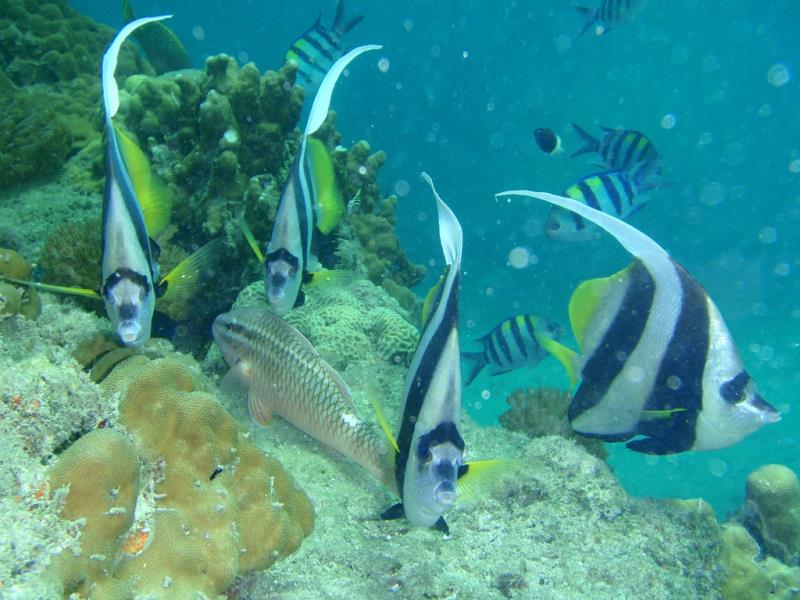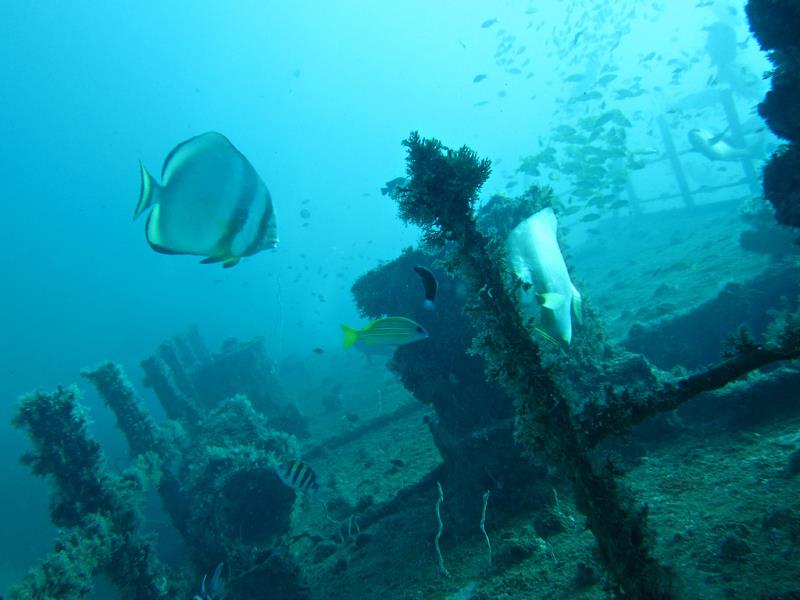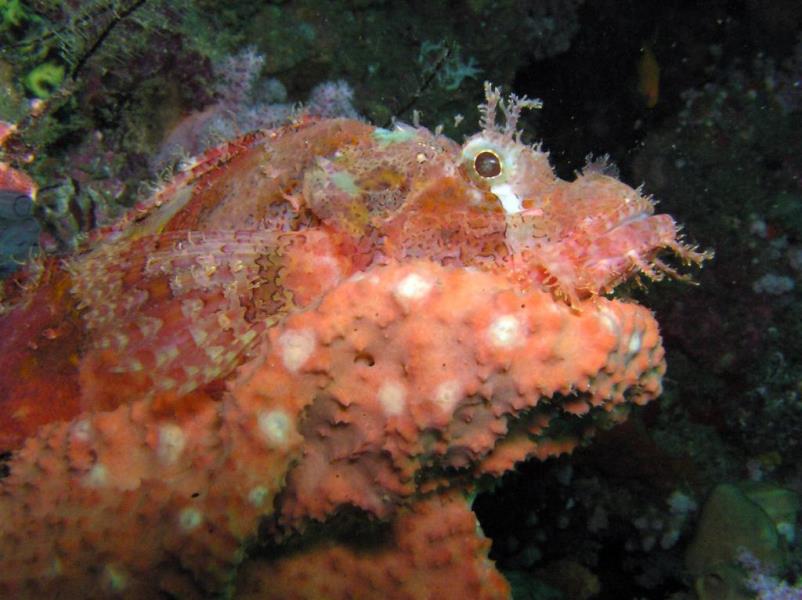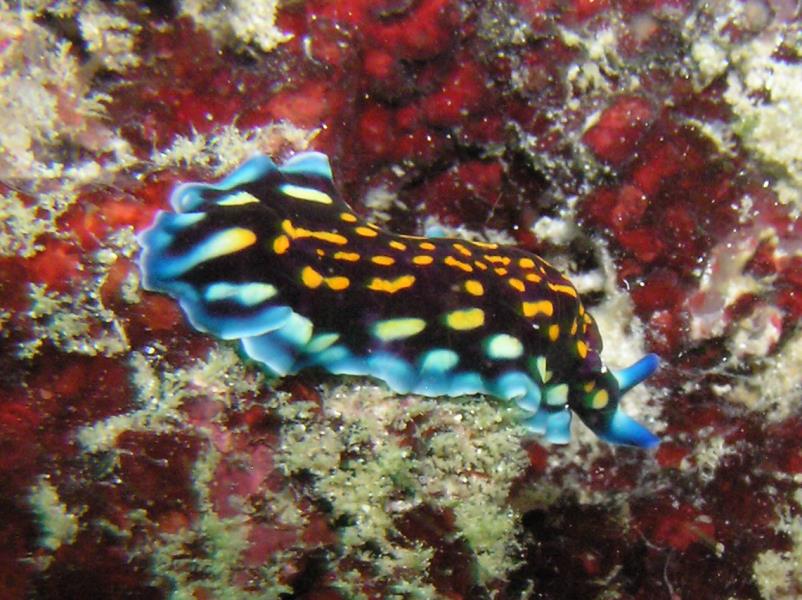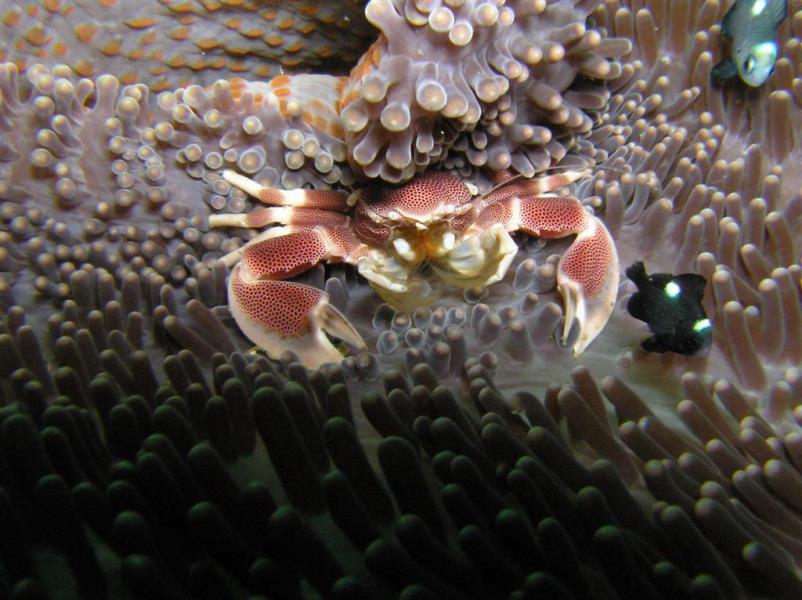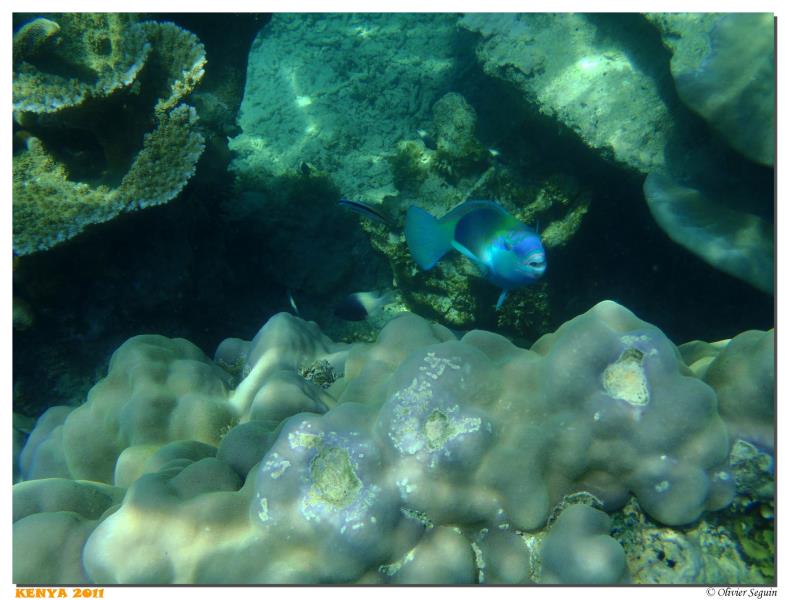 Scuba Diving Kenya
Scuba Diving Kenya
49 Dive Sites 16 Dive Shops 1 Dive Logs
Part 1: Overview of Scuba Diving in Kenya
Kenya, officially known as the Republic of Kenya, is located in East Africa. It is bordered by five countries - Tanzania, Uganda, South Sudan, Ethiopia, and Somalia. The Indian Ocean lies on the southeast coast, and this is where all the scuba diving activities and associated resorts are. The country is named after Mount Kenya, which is the second highest mountain in Africa, after Kilimanjaro.
Kenya has 33 Wildlife Service Parks and Reserves. Five of these are designated Marine National Parks or Reserves - Mombasa, Watamu, Kisite, Kiunga, and Malindi. These are the main areas for scuba diving, and many dive operators are based in each of these areas. Kilifi is another popular diving area.
The coral reefs are in spectacular condition with thriving eco-systems and a huge diversity of fish and marine creatures. Visiting divers should expect to see larger species of marine life, such as whale sharks (in season), manta rays, green sea turtles, dolphins, and reef sharks. Grouper, barracuda, and morays are common; macro life such as seahorses, leaf scorpion fish, and rare crustaceans make great photography subjects.
To complement the fascinating reefs, there are some super wreck and cave dives too. Don't miss diving the purpose-sunk MV Dania; sitting upright between 12-32 meters, she is swarming with life. The Vuma Caverns are a must-do advanced dive, exploring the shallow caves, where divers have the chance to see large fish such as sharks, turtles, and groupers.
Scuba diving is a year-round activity in Kenya, and visibility reaches up to 30 meters; be aware that during July-August the visibility may be reduced, due to windy sea conditions. Generally, October-February is considered to be the best time to visit for diving. Water temperatures range from 23 Celsius to 28 Celsius, with the coolest times being June-September; a 3mm exposure suit is adequate protection for most.
The climate along the coastline is hot and tropical, with air temperatures ranging from 25 Celsius to 32 Celsius, depending on the season. Rain should be expected along the coastline; however, further inland the climate becomes more arid with a high possibility of droughts. The two rainy seasons are April-May and October-November. High altitude mountains have snow-capped peaks, and the temperatures here differ dramatically. Although Kenya lies on the equator, the seasons follow the patterns of the southern hemisphere.
Part 2: Dive Sites, Marine Life & Environment in Kenya
The Indian Ocean is teeming with healthy corals, large pelagics, and reef fish galore. The vibrant underwater world, protected by the five designated Marine National Parks, will please divers of all experience levels. Mombasa, Watamu, Kisite, Kiunga, and Malindi offer a wide variation of stunning reef diving.
A top-rated dive site to visit is the MV Dania. She was a cargo vessel, built in Norway in 1965, and used predominantly as a livestock carrier. Decommissioned in 2001, Buccaneer Diving requested she be stripped and used as an artificial reef in Kenya. By 2002, she was ready to be laid to rest, and was sunk perfectly upright on a sandy seabed, in 30 meters of water. Tiny blennies and sponges have now claimed her as their home; morays, barracuda, and large groupers use the ship as a hunting ground. Schooling fish patrol her bridge and impressive upper deck.
There is a selection of other wreck sites along the coast; the MFV Funguo, the Globe Star, Mida Wreck, and the Lighter, which sit at various depths from 8 meters to 30 meters. Kilifi Creek is also home to two wrecks - a freighter and a ferry.
The Vuma Caverns or Caves are one of the best places in Kenya to see whale sharks during the season. Not to mention the dolphins too! Descending beneath towering cliffs, to a depth of 20 meters, divers swim along a portion of reef before entering the cave system. Look into the blue for barracudas and rays.
Scuba divers with advanced experience are allowed to explore inside the stunning caverns. Large groupers and snapper lurk in the dark recesses of the caves and tunnels, and the discovery of smaller creatures such as nudibranchs and cowries is always a delight. A chimney formation leads divers back up to the top of the reef at 10 meters. The caves are situated near Kilifi Creek, outside from Watamu.
The Pinnacles is a great advanced deep dive, located north of the Mombasa Marine Reserve. Large fish are frequent visitors at this site; take your pick of manta rays, spotted eagle rays, sharks, napoleon wrasse, giant groupers, and barracudas. Flatworms and nudibranchs satisfy the critter lovers too.
Novice divers, underwater photographers, and experienced divers will enjoy drift diving along the myriad of coral reef systems. Divers keep coming back to Kenya, thanks to the abundance of amazing sites to visit.
Part 3: Dive Shops, Airports & Logistics of Diving in Kenya
Dive operators are spread out along Kenya's coast of the Indian Ocean; these range from PADI 5 Star IDC Centers to SSI and BSAC Dive Resorts. Many of the larger operators have bases at more than one hotel or location. Enriched Air Nitrox is available at the larger resorts. It is recommended to contact your chosen dive center before traveling, to make sure they meet all of your vacation diving requirements.
Buccaneer Diving is East Africa's multi-award winning PADI 5 Star Instructor Development Center. They run daily guided diving excursions - three sites per day - that visit dive sites both inside and outside the lagoon (reef) area in Mombasa. Photographic equipment is available for rent, with an editing room at the Voyager Hotel site. All of their boats are custom-built with shaded areas and the latest safety/emergency equipment. Boats have two captains on board. Dive groups are split into small teams, which are always guided by PADI professionals.
Buccaneer is the largest dive operator in Kenya, and has been in business for over 20 years; this is reflected in their impeccable reputation. All PADI courses are conducted from beginner up to instructor levels. They have bases at Voyager Hotel, Whitesands Hotel, and Sun 'n' Sand Hotel. Booking offices are also located at Lesoleil, The Reef Hotel, and Mombasa Beach Hotel.
Diving the Crab is a PADI 5 Star Gold Palm Resort, SSI Platinum Center, and BSAC Resort Center. This center was established in 1985, and is highly recommended for customer service and professionalism. Diving the Crab has a number of bases at Southern Palms, Ocean Village Club, Kole Kole Boutique Hotel, Maridadi Boutique Hotel, Jadini Hotel, Baobab Hotel, Safari Hotel, and Chale Island. Their main HQ is on Diani Beach, 30km south of Mombasa Island.
A full-service dive center, Diving the Crab offers all PADI and SSI courses; starting from beginner and going up to professional Dive master. Daily-guided diving tours are offered on their fleet of custom dive boats. With a large instructor and dive master team, they are versatile, and can offer a range of diving to suit all experience and comfort levels.
Mombasa or Moi International Airport (MBA) is the second largest airport in Kenya. It serves the Indian Ocean coastal region and is the main hub for visitors coming to the area. There are many domestic airports throughout the country for interior travel.
Photographs Source:
prilfish | Ivan Pantyushin | African Safari | Olivier Seguin | szomkat | Marc | Martin from Tyrol
---- Book Your Diving ----
Fill in the Form Below.
Our hand picked regional partners will deliver no obligation quotes.
Tweets by @DiveAdvisorApp
Top Dive Shops
Top Dive Sites
Certifications Offered
-
Bubblemaker
Charlie Claw\s Wasini Island Diving , Diani Beach -
Discover Scuba Diving
Charlie Claw\s Wasini Island Diving , Diani Beach -
Skin Diving
Charlie Claw\s Wasini Island Diving , Diani Beach
Dive Types & Activities
- Wreck Dive
- Training
- Reef Dive
- Underwater Photo & Video
- Boat Dive
- Beach Dive
- Drift Dive

